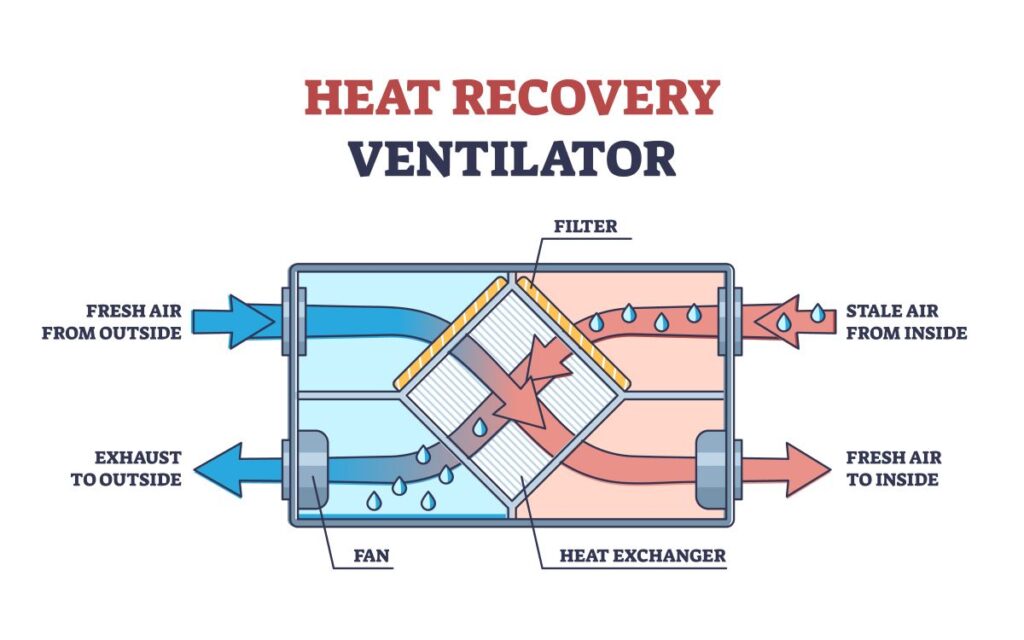If you are contemplating the purchase of a heat transfer system, there are several important factors you should consider before making your final decision. Here are eight essential points to keep in mind that will help you make an informed choice.
Heat transfer systems consume the same electricity as a light bulb
One of the most appealing aspects of heat transfer systems is their energy efficiency. You can operate your heat transfer system using just your fireplace or your heat pump located in the lounge. This means that you will be able to save a significant amount on your energy bills.
Moreover, the fans that are integral to heat transfer systems are designed to be energy-efficient, consuming only the same amount of electricity as a standard light bulb. Specifically, they typically use between 27W and 85W to function effectively, making them a cost-effective option for heating your home.
Heat transfer systems are more effective than heat pumps
While heat pumps are undoubtedly effective in their own right, they have a limitation: they can only heat one room at a time. In contrast, a heat transfer system is designed to distribute warmth throughout your entire home.
This is particularly beneficial for those rooms that are situated at the far end of your house, which often struggle to receive adequate heating. With a heat transfer system, you can ensure that every corner of your home is comfortably warm.
Heat Transfer Systems save wastage of excess heat
Another significant advantage of heat transfer systems is their ability to capture and utilise excess heat. For instance, when your fireplace or heat pump is operating in your living room, any surplus heat typically escapes through the roof space, resulting in wasted energy.
Heat transfer systems are specifically designed to capture this excess heat and redistribute it to other areas of your home, ensuring that no energy goes to waste and that your living space remains warm and inviting.

You breathe in fresh air
During the colder months, it is common for us to keep our doors and windows tightly shut to maintain warmth within our homes. However, this can lead to poor air circulation, which may have negative implications for our health. Heat transfer systems help mitigate this issue by promoting better air circulation throughout your home.
By circulating the air, these systems can significantly reduce the presence of mould and mildew, contributing to a healthier indoor environment. Furthermore, if you choose to pair your heat transfer system with a ventilation system, you can also introduce fresh air from outside, enhancing the overall air quality within your home.
Heat transfer systems can be used in summer too
It is a common misconception that heat transfer systems are only useful during the winter months. In reality, these systems can also be highly effective in the summer.
By utilising a Summer-Vent Extension kit, you can enhance your heat transfer system to bring in cool air from the outside, providing a refreshing breeze during the warmer months. This versatility makes heat transfer systems a year-round solution for maintaining a comfortable home environment.
Heat transfer systems are cost effective
At first glance, the installation of a heat transfer system may appear to be a significant investment. However, when you consider the long-term benefits, it becomes clear that they are a cost-effective solution.
Unlike traditional heating methods that may require separate heat pumps for each room, a single heat transfer system can efficiently serve your entire home. This means that, in the long run, you are likely to save money on both installation and energy costs.
Adjustable Diffusers
One of the standout features of heat transfer systems is their adjustable diffusers. While these systems are designed to distribute heat throughout your home, you have the flexibility to control where the heat is directed.
Each room can be equipped with adjustable diffusers, allowing you to turn the heat on or off as needed. This level of control ensures that you can tailor the heating to suit your preferences and the specific needs of each room.
They are noiseless
For those who are concerned about noise levels, it is worth noting that many heat transfer systems operate quietly. This is largely due to the use of acoustic ducting during installation, which minimises sound. As a result, you can enjoy the benefits of a warm home without the distraction of noisy machinery.
If you are considering the installation of a heat transfer system or a ductless air conditioner, it is advisable to reach out to your local electrician for a quote. They can provide you with expert advice tailored to your specific needs and help you make the best choice for your home.
With the right system in place, you can enjoy a comfortable, energy-efficient living space all year round.